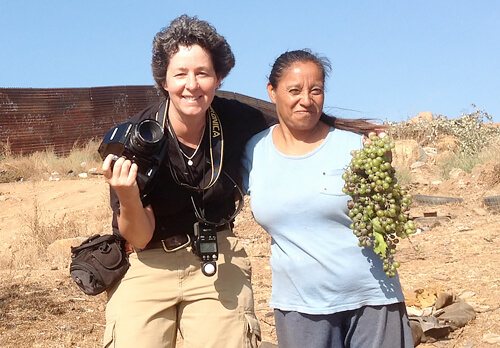Born in Jerusalem, Israel Michelle Frankfurter is a documentary photographer, currently living in Takoma Park, Maryland.
A graduate from Syracuse University with a bachelor’s degree in English, Michelle has been recognized, published and exhibited worldwide.
Before settling in the Washington, DC area, Frankfurter spent three years living in Nicaragua, where she worked as a stringer for the British news agency, Reuters and with the human rights organization Witness For Peace documenting the effects of the contra war on civilians. In 1995, a long-term project on Haiti earned her two World Press Photo awards. Since 2000, Frankfurter has concentrated on the border region between the United States and Mexico and on themes of migration. She is a 2013 winner of the Aaron Siskind Foundation grant, a 2011 Top 50 Critical Mass winner, a finalist for the 2011 Aftermath Project and the 2012 Foto Evidence Book Award for her project Destino, documenting the journey of Central American migrants across Mexico.
Her first book, Destino was published in September 2014 by Foto Evidence.
About Destino
Meaning both "destination" and "destiny" in Spanish, Destino portrays the perilous journey of undocumented Central American migrants along the network of freight trains lurching inexorably across Mexico, towards the hope of finding work in the United States. It is the odyssey of a generation of exiles across a landscape that is becoming increasingly dangerous, heading towards a precarious future as an option of last resorts.
Unlike Mexican migration to the United States that dates back to the 1880's, the unprecedented wave of Central American migration began a full century later, the consequence of bloody civil wars, U.S. Cold War-era intervention in the region and crippling international trade policies. Those regional conflicts left a legacy of drug and gang related violence, a high incidence of domestic abuse, and unrelenting poverty.
Migration as an issue is current; the story of migration is timeless. Having grown up on the adventure tales of Jack London and Mark Twain, and then later on Cormac McCarthy's border stories, there is no storyline more compelling to me than one involving a youthful odyssey across a hostile wilderness. With a singularity of purpose and a kind of brazen resilience, migrants traverse deadly terrain, relying mostly on their wits and the occasional kindness of strangers. In documenting a journey both concrete and figurative, I convey the experience of individuals who struggle to control their own destiny when confronted by extreme circumstances, much like the anti-hero protagonists of the adventure tales I grew up reading.
About The Island
I made five trips to Haiti between 1993 and 1995. During that time, a de facto government held the island nation captive, while an international trade embargo intended to oust the regime made life miserable for Haiti's poor. An American-led military intervention restored exiled president, Jean Bertrand Aristide to power. This series depicts the recycled repression, regional isolation, imprisonment, and liberation throughout Haiti's turbulent history.
Selected Books on

